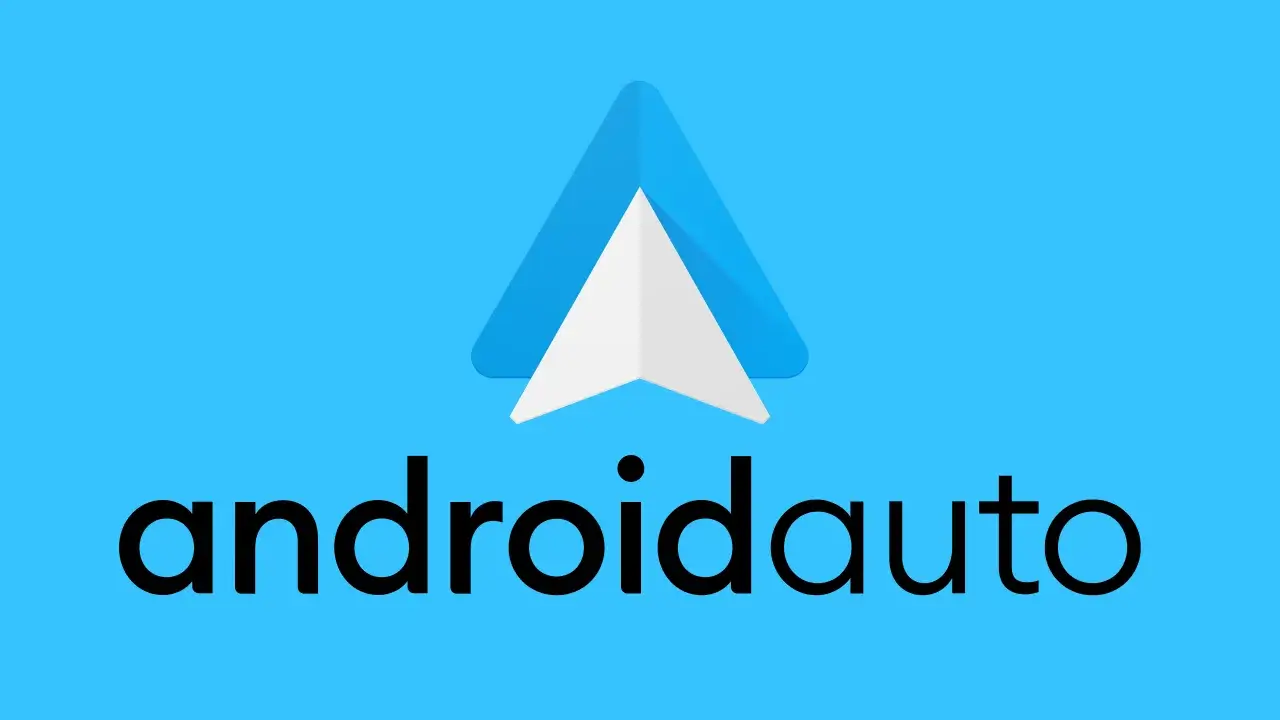Google continues to refine its in-car infotainment and driving assistance system, Android Auto, with a significant new update.
The tech giant has just released Version 14.7 Beta, which promises to bring substantial improvements to the user experience. This latest iteration is now available for download, allowing eager users to experience the new features firsthand. Drivers can access the update either through the official Play Store or by downloading the APK Mirror file, offering flexibility in how they choose to install it.
This update is not merely incremental; it introduces “significant design changes” and aims to “improve usability” for drivers. By focusing on both aesthetics and functionality, Google is clearly striving to make Android Auto more intuitive, less distracting, and ultimately, a more seamless part of the modern driving experience.
The immediate impact on users is expected to be noticeable, promising a refreshed interface and enhanced capabilities that cater to the evolving needs of connected vehicles. These changes reflect Google’s ongoing commitment to developing its driving assistance system, ensuring it remains at the cutting edge of in-car technology.
Design Overhaul: Introducing a Bright Theme
A standout feature of Android Auto 14.7 Beta is the introduction of a new visual mode, catering to diverse lighting conditions and personal preferences.
First-Ever Bright Theme and Enhanced Flexibility
One of the most immediate and noticeable changes in Android Auto Version 14.7 Beta is Google’s “first-ever test of a bright theme.” This marks a significant departure from the previous aesthetic, which primarily relied on darker display options. The introduction of a bright theme provides a fresh visual experience, particularly beneficial during daytime driving conditions where a darker interface might be less legible. With this addition, users now have access to a total of “three different design modes.”
These modes include the traditional dark theme, the newly introduced bright theme, and a highly convenient “automatic mode.” The automatic mode is designed to intelligently “adapt the display to the time of day.” This means that during daylight hours, the system can automatically switch to the brighter interface, optimizing visibility and reducing eye strain. As evening approaches or lighting conditions change, it can revert to a darker theme, which is generally more comfortable for night driving and helps minimize glare.
This dynamic adaptability “significantly improves flexibility and usability,” allowing Android Auto to seamlessly adjust to various ambient light conditions without requiring manual intervention from the driver. This thoughtful design choice aims to enhance safety and comfort, reducing the need for drivers to interact with settings while on the road.
Consistent Design Across All Applications
The integration of this new design paradigm extends beyond just the appearance of the core Android Auto interface. Crucially, the update ensures a “consistent display across all apps.” This means that the visual elements, color schemes, and overall aesthetic applied by the new theme will be uniformly reflected across all compatible applications running within Android Auto. This consistency is a major improvement, replacing what might have been disparate visual experiences with individual app settings.
Previously, “the new design replaces the previous Google Maps settings,” indicating a centralized control over the visual presentation that overrides individual app-specific customizations. This unified approach offers significant benefits for drivers. A “uniform design” across all applications simplifies navigation and interaction, reducing the cognitive load on the driver.
When all elements look and behave consistently, drivers can more quickly locate information and perform tasks without being distracted by jarring visual shifts between different apps. This focus on consistency directly contributes to the goal of “reducing distractions while driving,” making the in-car experience safer and more intuitive. The visual coherence aims to create a more harmonious and less fatiguing environment for the user, allowing them to concentrate more effectively on the road.
Enhanced Functionality: Gemini AI and System Stability
Beyond visual enhancements, Android Auto 14.7 Beta integrates advanced AI and crucial stability improvements for a smoother user experience.
Gemini AI: Smarter Voice Commands and Navigation
A major leap forward in Android Auto’s functionality comes with the seamless integration of Gemini, Google’s advanced AI assistant. This integration is set to revolutionize how drivers interact with their vehicle’s infotainment system. With Gemini on board, “voice commands are to be processed more precisely.”
This means that the AI will be better equipped to understand natural language queries, nuanced requests, and complex instructions, leading to fewer misunderstandings and more accurate responses. Whether a driver asks for specific music, directions, or information, Gemini’s enhanced processing capabilities aim to deliver a more fluid and reliable voice interaction.
Furthermore, Gemini’s intelligence extends to navigation, promising to optimize routes automatically. The AI can leverage real-time traffic data, user preferences, and predictive analysis to suggest the most efficient and convenient routes. This could mean dynamic rerouting to avoid unexpected congestion or suggesting alternative paths based on learned driving habits.
The update also brings a significant practical enhancement: “climate controls are now operable via the touchscreen.” This offers a convenient, digital interface for managing cabin temperature, fan speed, and air distribution, reducing the need to interact with physical buttons and allowing for more precise adjustments directly from the central display. These combined features aim to make the driving experience more intuitive, connected, and personalized.
Bug Fixes and Performance Optimizations
Beyond the exciting new features and AI integration, the Android Auto 14.7 Beta update also brings essential under-the-hood improvements that are crucial for a reliable user experience. The update significantly “contributes to system stability.” A stable system is paramount in a driving environment, as glitches or crashes can be distracting and potentially unsafe. To achieve this stability, the update “includes numerous bug fixes.” These fixes address various software defects, errors, and inconsistencies that may have affected previous versions, leading to smoother operation and fewer unexpected issues.
In addition to bug squashing, the update also incorporates “performance optimizations.” These optimizations are designed to make the system run more efficiently, resulting in “smoother operations.” This could mean faster app loading times, more responsive touch interactions, quicker transitions between screens, and an overall more fluid user interface.
Enhanced performance reduces frustration and allows drivers to access information and features more quickly, minimizing the time their attention is diverted from the road. The combination of increased stability and improved performance ensures that Android Auto provides a dependable and responsive platform, enhancing both safety and user satisfaction during every journey.
Fascinating Facts About Android Auto
Delve into some lesser-known details about Android Auto’s history, capabilities, and Google’s approach to app development.
Wireless Operation: An Early Innovation
Despite a common misconception among many users, Android Auto has supported wireless operation since 2018. This often-overlooked fact highlights an early leap in convenience that many assume is a more recent innovation. While it’s true that for a long time, and even currently for some older setups, Android Auto required a physical cable connection to the vehicle’s infotainment system, the capability for a cable-free experience has been available for several years. Specifically, since Android 8.0 (Oreo) on the smartphone side and Android Auto 3.1 on the system side, a wireless connection has been technically possible.
However, there’s a crucial caveat: this wireless connectivity is “only possible with compatible vehicles and smartphones running Android 10 or higher.” This compatibility requirement has meant that not all users could immediately benefit from wireless Android Auto, leading to the perception that a wired connection was always necessary.
The limited availability of compatible head units and phones in the early days meant that many experienced Android Auto primarily through a USB cable. Nevertheless, the underlying technology has been present for a significant period, demonstrating Google’s forward-thinking approach to in-car connectivity, long before wireless became a more widespread expectation. As newer vehicles and smartphones increasingly support these standards, more users are now enjoying the convenience of a cable-free experience.
Hyundai: The Pioneer Integrator
When Android Auto was initially unveiled by Google in 2014, it marked a significant step forward in integrating smartphone functionality seamlessly into vehicle dashboards. However, it wasn’t just Google pushing this innovation; automotive manufacturers played a critical role in bringing it to consumers.
Interestingly, Hyundai stood out as the pioneering automotive manufacturer in this adoption. “Hyundai was the first manufacturer to integrate it as standard in the Sonata as early as 2015.” This early adoption by Hyundai, just one year after Android Auto’s initial announcement, speaks volumes about the company’s foresight and commitment to offering advanced technology in their vehicles.
Hyundai’s swift integration into a mass-market model like the Sonata demonstrated a clear understanding of the evolving consumer demand for connected car experiences. This move positioned Hyundai as a leader in infotainment innovation, long before Android Auto became a ubiquitous feature.
To put this into perspective, its integration in the Sonata occurred “long before it became available in over 500 vehicle models” across various brands. This early partnership was crucial for establishing Android Auto’s foothold in the automotive industry and paved the way for its widespread adoption across different car manufacturers and vehicle segments. Hyundai’s proactive approach played a significant role in bringing this technology from concept to mainstream reality for drivers worldwide.
Strict Control Over Third-Party Applications
While Android Auto aims to provide a rich and useful in-car experience, Google maintains a stringent approach to ensuring driver safety, particularly regarding third-party applications. Developers are indeed empowered to “create their own apps for Android Auto.” This open development environment allows for a wide range of functionalities, from navigation alternatives to specialized audio playback and messaging services. However, this flexibility comes with a crucial layer of control: “Google rigorously reviews these [third-party] apps to minimize distractions.”
The review process is thorough and designed to ensure that any application operating within the Android Auto environment adheres to strict safety guidelines. This means that “not every app may be used while driving.” Google’s primary concern is preventing applications from presenting excessive visual information, requiring complex interactions, or otherwise diverting a driver’s attention from the road. While this strict vetting process “increases safety,” by reducing potential distractions and ensuring that only driver-friendly apps are available, it also, by necessity, “limits the selection” of applications compared to a smartphone’s full app ecosystem.
This trade-off prioritizes driver safety over an unrestricted app library, reflecting Google’s commitment to responsible in-car technology development. This controlled environment ensures that Android Auto remains a tool for convenience and navigation, rather than a source of dangerous distraction.
A Note on Cybersecurity: Android Malware Alert
While focusing on Android Auto’s improvements, users are reminded to stay vigilant against prevalent cybersecurity threats targeting Android devices.
Beware of Banking App Malware
In an important and timely warning, “Android users must currently be particularly careful” regarding cybersecurity threats. A “dangerous malware is spreading” that specifically targets Android devices, posing a significant risk to personal and financial information. The nature of this malware is particularly “perfidious,” meaning it is insidious and deceptive in its method of attack.
This specific threat “masquerades as a banking app.” This tactic is designed to trick unsuspecting users into downloading and installing what they believe to be a legitimate application from their financial institution. Once installed, such malware can then gain unauthorized access to sensitive data, including login credentials, banking information, and personal details. It may also intercept SMS messages, allowing attackers to bypass two-factor authentication.
Users are advised to only download banking apps from official and trusted sources, such as the Google Play Store, and to be extremely cautious of suspicious links or unsolicited requests to install applications. This reminder serves as a crucial addendum to any discussion about Android technologies, emphasizing the ongoing need for user vigilance in the face of evolving cyber threats.
Brighter, Smarter Android Auto Experience
Google’s release of Android Auto Version 14.7 Beta signals a significant step forward in its in-car system development. The most immediate change for users is the introduction of a new bright theme, complementing existing dark modes and an automatic adjustment feature, ensuring optimal visibility and consistent design across all applications to minimize driver distraction.
Beyond aesthetics, the update integrates Gemini, Google’s advanced AI assistant, promising more precise voice commands, optimized route suggestions, and convenient touchscreen control for climate functions. These enhancements, coupled with crucial bug fixes and performance optimizations, aim to deliver a more stable and fluid user experience.
While Android Auto has boasted wireless capabilities since 2018 and Hyundai pioneered its integration in 2015, Google’s continued strict vetting of third-party apps underscores its unwavering commitment to driver safety. Users are also reminded to remain vigilant against lurking Android malware, particularly those disguised as banking apps, highlighting the ongoing need for cybersecurity awareness alongside technological advancements.








